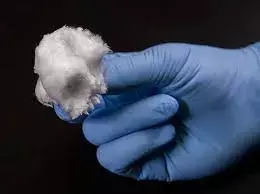- Home
- Medical news & Guidelines
- Anesthesiology
- Cardiology and CTVS
- Critical Care
- Dentistry
- Dermatology
- Diabetes and Endocrinology
- ENT
- Gastroenterology
- Medicine
- Nephrology
- Neurology
- Obstretics-Gynaecology
- Oncology
- Ophthalmology
- Orthopaedics
- Pediatrics-Neonatology
- Psychiatry
- Pulmonology
- Radiology
- Surgery
- Urology
- Laboratory Medicine
- Diet
- Nursing
- Paramedical
- Physiotherapy
- Health news
- Fact Check
- Bone Health Fact Check
- Brain Health Fact Check
- Cancer Related Fact Check
- Child Care Fact Check
- Dental and oral health fact check
- Diabetes and metabolic health fact check
- Diet and Nutrition Fact Check
- Eye and ENT Care Fact Check
- Fitness fact check
- Gut health fact check
- Heart health fact check
- Kidney health fact check
- Medical education fact check
- Men's health fact check
- Respiratory fact check
- Skin and hair care fact check
- Vaccine and Immunization fact check
- Women's health fact check
- AYUSH
- State News
- Andaman and Nicobar Islands
- Andhra Pradesh
- Arunachal Pradesh
- Assam
- Bihar
- Chandigarh
- Chattisgarh
- Dadra and Nagar Haveli
- Daman and Diu
- Delhi
- Goa
- Gujarat
- Haryana
- Himachal Pradesh
- Jammu & Kashmir
- Jharkhand
- Karnataka
- Kerala
- Ladakh
- Lakshadweep
- Madhya Pradesh
- Maharashtra
- Manipur
- Meghalaya
- Mizoram
- Nagaland
- Odisha
- Puducherry
- Punjab
- Rajasthan
- Sikkim
- Tamil Nadu
- Telangana
- Tripura
- Uttar Pradesh
- Uttrakhand
- West Bengal
- Medical Education
- Industry
Borate adhesive system protects against Effect of citric acid erosion on enamel and dentin

A Borate adhesive system is effective against the effect of citric acid erosion on enamel and dentin according to a recent study published in the Journal of Dentistry
This study examined the ability of a borate adhesive to protect enamel/dentin surfaces from acidic erosion and its effect on the shear bond strength (SBS) of enamel/dentin to resin composite.
180 human enamel/dentin specimens were utilized. Enamel buccal surfaces were etched with phosphoric acid and then divided into (EBG) borate glass adhesive group; (ERS) resin-adhesive system group; (EF) fluoride gel 1.23% group, and enamel control (EC) group; followed by bonding to orthodontic-buttons. The dentin specimens were conditioned by EDTA (Ethylene-diamine-tetra-acetic acid) and divided into (DBG) borate glass resin, (DRS) resin adhesive; (DDA) group had a dentin-desensitizing agent VivaSens and (DC) control group. The treated enamel/dentin specimens had their SBS to composite. The enamel/dentin specimens were exposed to 1% citric acid (18 min). Enamel/dentin specimens were examined by (SEM/EDS) scanning-electron-microscope equipped with electron-dispersive-spectroscopy and (FTIR/ATR). Analysis-of-Variance (ANOVA) was used to compare the SBS and the Wilcoxon-signed-rank test was used to compare the enamel/dentin areas protected by the applied agents before/after erosion (p = 0.05).
Results
- There was no significant difference in SBS among all groups except for (DDA) group which showed a significant decrease
- (EBG) and (DBG) groups were the only groups that significantly protected enamel and dentin from erosion
- FTIR/ATR showed that erosion altered the chemical structure of (DRS), (DDA), and (DC) groups but did not affect the other enamel/dentin groups.
- The degree of conversion of the borate-adhesive system was acceptable.
Thus, the Borate adhesive system released calcium and phosphate compounds that decreased the erosive activity of the citric acid resulting in protecting simulated dentin-hypersensitive areas and enamel from erosion without affecting the SBS to resin-composite. A Borate adhesive system can be adopted as a therapeutic agent in a fully integrated program for protecting dentin-hypersensitive areas and in enamel next to orthodontic fixed appliances.
Reference:
Mona A. Abbassy, Ahmed Ibrahim Masoud, Fahd Faiz Alsulaimani, Ahmed S. Bakry. Effect of citric acid erosion on enamel and dentin and possible protection by a novel bioactive borate adhesive system, Journal of Dentistry, Volume 124, 2022, 104208, ISSN 0300-5712, https://doi.org/10.1016/j.jdent.2022.104208.
Dr. Shravani Dali has completed her BDS from Pravara institute of medical sciences, loni. Following which she extensively worked in the healthcare sector for 2+ years. She has been actively involved in writing blogs in field of health and wellness. Currently she is pursuing her Masters of public health-health administration from Tata institute of social sciences. She can be contacted at editorial@medicaldialogues.in.
Dr Kamal Kant Kohli-MBBS, DTCD- a chest specialist with more than 30 years of practice and a flair for writing clinical articles, Dr Kamal Kant Kohli joined Medical Dialogues as a Chief Editor of Medical News. Besides writing articles, as an editor, he proofreads and verifies all the medical content published on Medical Dialogues including those coming from journals, studies,medical conferences,guidelines etc. Email: drkohli@medicaldialogues.in. Contact no. 011-43720751


